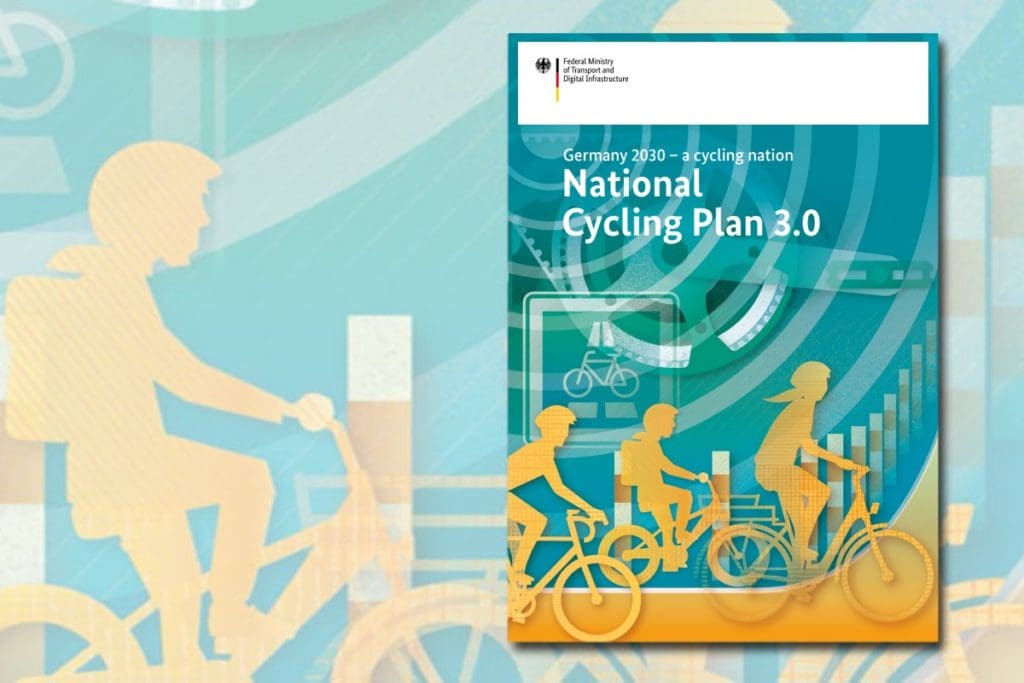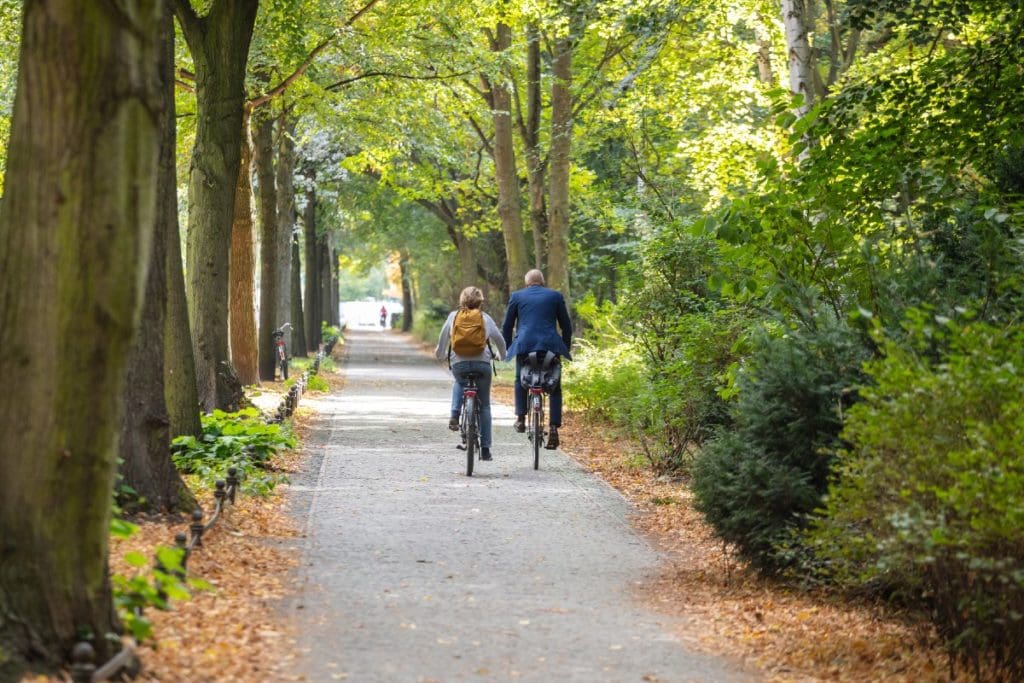Germany’s 2030 Vision to Double Cycling Numbers

Berlin, Germany
A German 2030 National Cycling Plan has set out a blueprint to doubling the number of kilometres Germans are cycling over the next decade.
Greater government investment, modernised legislation, seamless cycling networks, improved bike parking and ongoing engagement with communities have been identified as key measures to achieve the goal, outlined in the National Cycling Plan (NCP) 3.0.
The plan was adopted in early September, just days before the German federal election deposed the Conservative union of outgoing Chancellor Angela Merkel and thrust left-leaning parties into a position to form government. The centre-left Social Democrats and Greens significantly increased their representation in parliament and are now in three-way discussions with the Free Democratic Party to form government in early December.
The Greens, who were in Opposition prior to the election, have been planning a radical overhaul of the transport sector and are increasing their pressure on other mainstream parties to support major changes to encourage active transport in a country where 78.8% of people already own a bicycle (around 79 million bikes in total) and 11.4% own an e-bike – compared to 77.4% car ownership.
NCP 3.0 aims to increase the number of bike trips in Germany from 120 per person in 2017 (for a total of 112km per day) to 180 per person in 2030 (224km per day), while extending the average length of trips from 3.7km to 6km over the same period.
Building a Cycling Nation
According to the report’s vision to make Germany “a cycling nation” by 2030: “…cycling will be a matter of course and diverse. People will enjoy cycling and feel safe doing so. In short, cycling will be attractive to everyone, a way of life and an opportunity to experience and engage with the world in a new way. The bicycle will be the means of transport of choice on more and more routes, both in everyday life and for leisure.”
It pictures a booming bike industry experiencing record growth and entrenched as a world leader, as well as cycle tourism attracting many domestic and international visitors, and enhanced quality of life for its residents.
Research to develop the plan brought together academic experts, business leaders, government representatives, community members and associations. Online engagement invited residents to submit ideas and rate more than 2,000 ideas for improving cycling.
They could also vote on the plan’s guiding principles and respondents put ‘seamless cycling’ way out on top of the list.
NCP 3.0 says seamless cycling would comprise user-friendly, easy-to-follow and “error tolerant infrastructure” that is well maintained and includes a massive increase in all-weather bike parking facilities that are close to destinations, easily accessible and have adequate space for cargo bikes and bicycles with trailers.
It prescribes a rapid national roll-out of cycling infrastructure by Federal Government, federal states and local authorities, well informed by the “requirements of everyday cycling”.
This network would integrate effectively with other transport modes – with improved opportunity and ability to take bikes on public buses and trains – and would be accompanied by heightened and targetted community education programs.

Doubled Government Expenditure
NCP 3.0 calls on government to double its expenditure on cycling infrastructure, to around €30 per person per year (A$46.74).
It estimates the Federal Government will provide €1.46 billion (A$2.27 billion) in funding for cycling between 2020 and 2023, with additional funding through initiatives such as the Urban Logistics program and Climate Protection through Cycling competition.
“In total, funding for cycling for the period from 2020 to 2023 amounts to around €11 per (A$17.13) person per year,” it says.
In comparison, Australia’s national government spend on bike infrastructure is estimated at $16.35 per capita in 2020, across Local Government and State government expenditure.
Berlin Expansion
One of Germany’s most proactive cities for cycling, Berlin, has initiated plans to expand its cycle network by more than 3,000 kilometres.
Berlin’s Senate for the Environment, Transport and Climate Protection endorsed the plan to triple the total length of bike paths and bike lanes in Berlin, which is already ranked as one of the world’s most bike-friendly cities.
The additional bike infrastructure includes:
- An 865km ‘priority network’ with 2.5m wide paths
- A ‘supplementary’ network of 1,506km of paths averaging around 2.3m wide (with a minimum width of 2m)
- Another 550km of cycle paths on main roads that were previously not regarded as part of the cycle network but will be upgraded to meet standards outlined in the city’s Mobility Act
An additional 100km of wider “rapid cycle connections” is also proposed, to be at least 3m wide. The system of seven long-distance cycle paths and the Wall Trail as a cycle and hiking path would be a further component of Berlin’s cycle infrastructure, according to Berlin’s Senator for the Environment, Transport and Climate Protection, Regine Günther.
She said they should be the subject of a separate plan, once the necessary environmental assessments were undertaken, and would then be integrated into the cycle traffic plan.
Ms Günther said the proposed expansion would equip the city with the best cycling network in Germany.
While Berlin has been heralded as one of the world’s best cities for cycling, it currently sits 15th in a ranking compiled by international cycling infrastructure consultant and bike advocate Copenhagenize. Bremen is the highest ranked German city, sitting 11th.
The 8th ranked city, Paris, has just unveiled plans to become a “100% cycling city” within three years. Paris Mayor Anne Hidalgo has escalated her Plan Velo into a A$388 million strategy for improvements to cycling infrastructure that includes around 100,000 new parking spaces – while removing more than 70% of the city’s on-street car parking spaces
The additional infrastructure in Berlin’s own plan will link all the important destinations throughout the city, including residential areas, workplaces, education facilities and shopping hubs.
It complements Berlin’s existing 1,500km of cycling paths and lanes, which were largely created during the 1990s.
The bicycle traffic plan also includes measures to expand the range of bicycle parking facilities.
It has been referred to a Council of Mayors – comprising the Mayor of Berlin and the Mayors of each of Berlin’s districts – to be considered for endorsement.
The plan builds on the Berlin Mobility Act and the urban development plan for mobility and traffic and replaces the Berlin bicycle traffic strategy from 2013.
Further information on Berlin’s cycling policy can be found here.
Join the Conversation:
Would you like to see a similar strategy developed for Australia?
